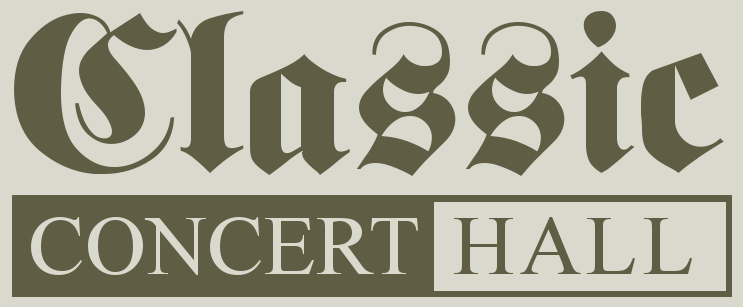Watch
 Ranked #8 in Most Listened. Ranked #8 in Most Listened.
 Ranked #5 in Most Commented. Ranked #5 in Most Commented.
Comments (14)
Comment on this music
Login/Register to post a comment.
|
Praeludium & Fuge A-dur
Uploaded by: marcothart
Composer: Rinck, Johan Christian Heinrich Organ: Müller Grote of Sint Bavo extended Software: Hauptwerk IV Views: 155
Praeludium in B
Uploaded by: wolfram_syre
Composer: Leyding, Georg Dietrich Organ: Kampen, Bovenkerk Hinsz/F.C. Schnitger Software: Hauptwerk IV Views: 81
Fantasia in Es Major
Uploaded by: EdoL
Composer: Pachelbel, Johann Organ: 1766 Riepp Dreifaltigkeits Organ, Ottobeuren, Germany Software: Hauptwerk VII Views: 108
Dialogue of the reeds
Uploaded by: adri
Composer: An improvisation Organ: 1766 Riepp Dreifaltigkeits Organ, Ottobeuren, Germany Software: Hauptwerk VII Views: 63
|
Uploaded by:
|
yolar (08/27/24)

|
|
Composer:
|
Schneider, Johann 
|
|
Sample Producer:
|
OrganArt Media 
|
|
Sample Set:
|
1766 Riepp Dreifaltigkeits Organ, Ottobeuren, Germany

|
| Software: | Hauptwerk VII |
| Genre: | Baroque |
| Description: | Johann Schneider (1702 – 1788) was a German organist, violinist and composer. Around 1720 he became a keyboard pupil of J.S. Bach. Besides keyboard with Bach, he studied violin with Johann Gottlieb Graun. In 1729 Schneider became organist of the Nicolaikirche in Leipzig. He remained in this position for the rest of his career. Schneider enjoyed a reputation as a truly great organist. A contemporary wrote that his “preludes on the organ are of such good taste that in this field, except for Mr. Bach, whose pupil he has been, there is nothing better to be heard in Leipzig”.
Only a small number of his organ works survive. Most of them are contained in manuscript Mus. Ms. 30377, owned by the Staatsbibliothek Berlin. What little there is, shows great quality and makes one regret not more of Schneider’s music has survived to the present day. The style of Schneider’s music leans closely to the style of J.S. Bach, but shows traces of the galant style as well. Schneider had a thorough understanding of counterpoint. In his fugues and choral preludes he uses the usual tricks like diminution, stretto and inversion with ease and to great effect. Yet the music never becomes `learned’, the musical flow was obviously Schneider’s main concern when composing.
(source: Partitura Organum) |
| Performance: | Live |
| Recorded in: | Stereo |
| Playlists: |
|
|
Options:
|
 Sign up today to download piece. Sign up today to download piece.
 Login or Register to Subscribe Login or Register to Subscribe
 Click here to complete your hardware profile Click here to complete your hardware profile
|
|
|



